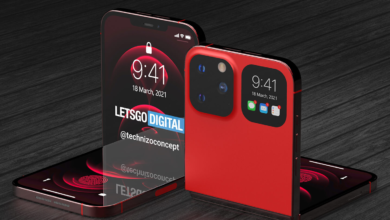How to Create Your Own Augmented Reality Experiences

Creating your own augmented reality (AR) experiences can be an exciting and rewarding endeavor, allowing you to blend the digital and physical worlds in innovative ways. AR has gained immense popularity in recent years thanks to advancements in technology and the accessibility of AR development tools. In this comprehensive guide, we will take you through the steps to create your own AR experiences, covering everything from understanding the basics to implementing advanced features. By the end of this guide, you’ll have the knowledge and skills to bring your AR ideas to life.
Augmented Reality Experiences
Augmented Reality (AR) is a technology that enhances the real-world environment by overlaying digital information, such as 3D objects, videos, or text, onto it. Unlike Virtual Reality (VR), which immerses users in entirely computer-generated environments, AR aims to blend the digital and physical worlds seamlessly. AR applications are designed to provide users with additional context, information, or interactivity in their surroundings.
Here are some key aspects and concepts related to Augmented Reality:
Real-time Interaction: AR experiences are typically interactive and respond to real-world inputs in real time. Users can interact with digital elements overlaid on their physical environment, often using devices like smartphones, tablets, smart glasses, or AR headsets.
Types of Augmented Reality:
- Marker-based AR: This method uses predefined markers, such as QR codes or images, to trigger AR content. When the device’s camera recognizes the marker, it overlays digital content on top of it.
- Markerless AR: Also known as location-based or markerless tracking, this type of AR uses GPS, compass data, or other sensors to position digital content in the real world without the need for markers.
- Projection-based AR: In this approach, digital content is projected onto physical surfaces, creating interactive displays. This is often seen in museums or interactive installations.
- Wearable AR: AR experiences can be delivered through wearable devices like AR glasses, providing hands-free access to information and interactivity.
Read More: The best passive bookshelf speakers for most people.
Key Components of AR:
- Sensors: AR devices are equipped with various sensors, such as cameras, accelerometers, and GPS, to understand the user’s environment and movements.
- Processing: Powerful processors are required to process the real-time data from sensors and render AR content.
- Display: AR content is typically displayed on screens, which could be the screen of a smartphone, tablet, or AR glasses.
- Software: AR applications and experiences are created using software development kits (SDKs) and frameworks that provide tools for tracking, rendering, and interacting with digital elements.
Applications of Augmented Reality:
- Gaming: AR gaming applications like Pokémon have become immensely popular, allowing players to interact with virtual characters and objects in the real world.
- Education: AR is used in educational apps to provide interactive and immersive learning experiences, such as anatomy simulations or historical reenactments.
- Retail: Retailers use AR for virtual try-ons, product visualization, and in-store navigation.
- Healthcare: AR is used in medical training, surgery planning, and patient education.
- Marketing: AR can be used for interactive advertising campaigns, where users can engage with branded content.
- Navigation: AR navigation apps provide real-time directions by overlaying arrows and information on the user’s view.
AR Development Tools:
- ARKit (iOS): Apple’s ARKit is a framework for creating AR apps on iOS devices.
- ARCore (Android): ARCore is Google’s equivalent framework for Android devices.
- Unity3D with Vuforia: Unity is a popular game engine that supports AR development, and Vuforia is an AR platform that integrates seamlessly with Unity.
- WebAR: This technology enables AR experiences to run directly in web browsers, making it accessible without the need for app installations.
Challenges in AR Development:
- Hardware Limitations: AR experiences require powerful hardware, which may not be universally accessible to all users.
- Design and User Interface: Creating intuitive and user-friendly AR interfaces can be challenging, as designers need to consider real-world context and user interactions.
- Privacy and Ethics: Collecting and using location and sensor data for AR raises privacy concerns, requiring developers to adhere to ethical guidelines.
Augmented Reality continues to evolve, and its potential applications are expanding across various industries. As technology advances and becomes more accessible, AR is expected to play an increasingly significant role in our daily lives, from gaming and entertainment to education, healthcare, and beyond. Developers and creators are continually exploring new ways to harness the power of AR to enhance our understanding of the world around us.
Getting Started with AR Development
Augmented Reality Experiences: To embark on your AR development journey, you’ll need the right hardware and software. This section will outline the basic requirements and help you choose the appropriate development platform based on your project goals.
Understanding AR Development Concepts
Augmented Reality Experiences: Before you start coding, it’s essential to grasp fundamental AR development concepts like tracking, detection, 3D modeling, and user interface design. These concepts lay the foundation for creating compelling AR experiences.
AR Development Tools and Frameworks
Augmented Reality Experiences: Explore the popular AR development platforms, including ARKit, ARCore, Unity3D with Vuforia, and WebAR development. Each platform has its strengths and weaknesses, so choosing the right one is crucial for your project’s success.
Creating Your First AR App
Augmented Reality Experiences: In this hands-on section, you’ll set up your development environment, build a simple AR object, and learn how to test your AR app on a compatible device.
Advanced AR Development Techniques
Augmented Reality Experiences: Take your AR development skills to the next level by delving into advanced techniques such as marker-based and markerless AR, geolocation-based AR, cloud anchors, and hand tracking.
Designing AR User Interfaces
Augmented Reality Experiences: Effective user interface design is essential for creating user-friendly AR experiences. Discover best practices for designing intuitive AR interfaces and integrating interactive elements.
3D Modeling for AR
Augmented Reality Experiences: Learn the basics of 3D modeling and how to optimize your 3D models for AR. This section also covers texturing, animation, and sound design for your AR assets.
AR Content Creation
Augmented Reality Experiences: Dive into the process of creating AR content assets, importing 3D models and textures into your development environment, and incorporating sound and audio effects.
Publishing and Distributing Your AR Experience
Augmented Reality Experiences: Once your AR app is ready, it’s time to prepare it for deployment on app stores and promote it to your target audience. This section provides insights into app store guidelines and marketing strategies.
AR and Ethical Considerations
Augmented Reality Experiences: As an AR developer, it’s crucial to be aware of ethical considerations related to privacy, accessibility, and potential societal impacts. This section explores these topics and offers guidance on responsible AR development.
Future Trends in AR Development
Augmented Reality Experiences: Stay updated on the latest trends in AR, including the emergence of AR glasses and wearables, applications in education and healthcare, and the role of artificial intelligence in shaping the future of AR.
Troubleshooting and Debugging
Augmented Reality Experiences: Even experienced developers encounter issues. Learn how to identify and resolve common AR development problems using debugging tools and techniques.
Resources for AR Developers
Augmented Reality Experiences: Discover a wealth of resources, including online tutorials, AR development communities, books, and documentation, to support your ongoing Learning and development.
Read More: Verizon Faster 5G Coverage Now Reaches 200 Million People
Conclusion
Sum up your journey through the world of augmented Reality and offer encouragement to aspiring AR developers, highlighting the endless possibilities that AR technology brings to the table.
By the time you’ve completed this comprehensive guide, you’ll be well-equipped to create your own augmented reality experiences and contribute to the ever-growing field of AR development. So, let’s get started on this exciting journey into the world of AR!
FAQS
1. What is Artificial Intelligence (AI)?
Artificial Intelligence (AI) refers to the simulation of human intelligence in machines that are programmed to think, learn, and problem-solve like humans. AI encompasses various technologies, including machine learning, natural language processing, and computer vision.
2. What is Machine Learning?
Machine Learning is a subset of AI that focuses on developing algorithms and models that enable computers to learn from and make predictions or decisions based on data. It’s commonly used in tasks like image recognition, recommendation systems, and autonomous vehicles.
3. What is Deep Learning?
Deep Learning is a subfield of machine learning that uses artificial neural networks to process and learn from large amounts of data. It’s particularly well-suited for tasks such as image and speech recognition.
4. What is Natural Language Processing (NLP)?
Natural Language Processing is a branch of AI that deals with the interaction between computers and human languages. It’s used in applications like chatbots, language translation, and sentiment analysis.
5. What is Augmented Reality (AR) vs. Virtual Reality (VR)?
Augmented Reality (AR) overlays digital information in the real world, enhancing the user’s perception of Reality. Virtual Reality (VR), on the other hand, immerses users in entirely computer-generated environments, isolating them from the real world.







